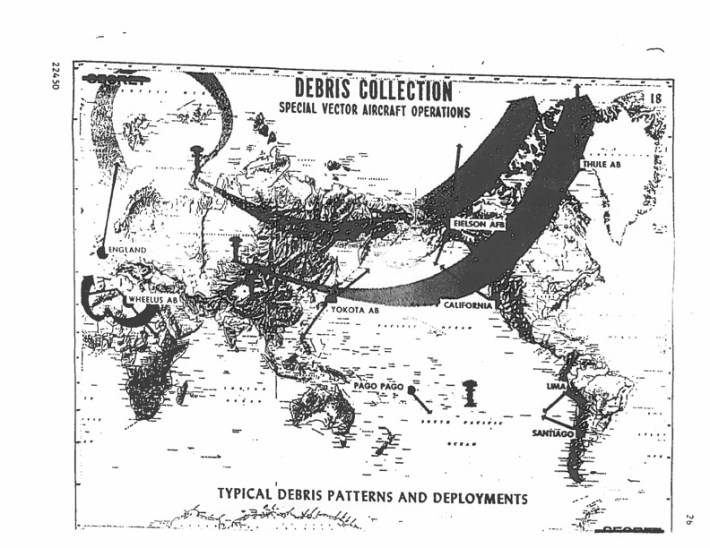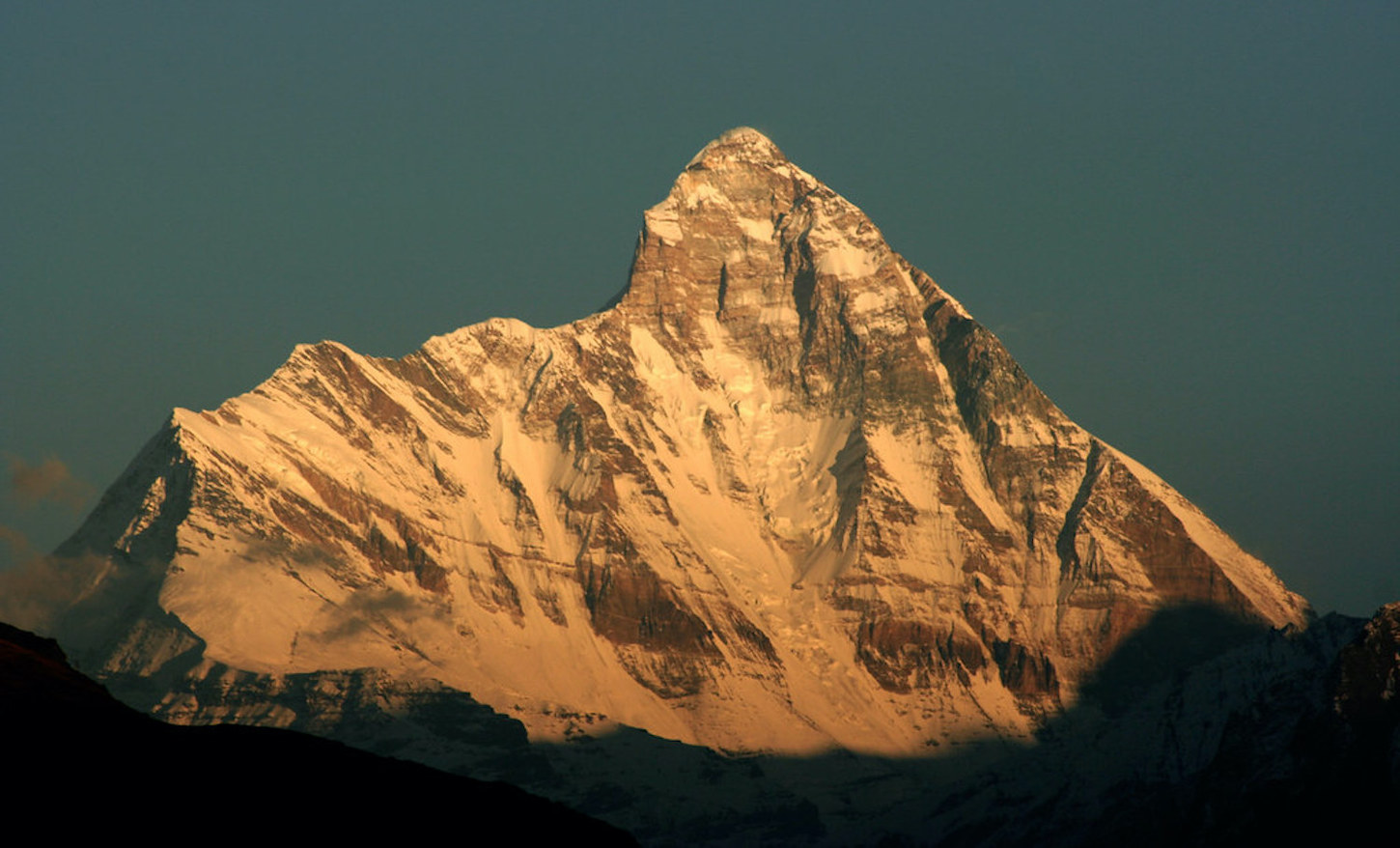The year is 1964. The United States and the Soviet Union have narrowly avoided full-scale nuclear destruction and resolved the Cuban Missile Crisis, the Vietnam War looms on the horizon, and Mao Zedong's China—fresh off a split with the Soviets—has just successfully blown up its first atomic bomb in a dry lakebed in southeastern Xinjiang, near what is now the world's largest reserve for Bactrian camels.
China's nuclear test announced the country as the world's fifth nuclear-armed nation, though unlike France, the USSR, and the United Kingdom, the Chinese nuclear program was a black box for American intelligence. Recently declassified government files show, for example, that the U.S. was shocked to learn that the bomb was fueled by uranium, not plutonium. Military-industrial honchos were left scratching their heads as to how to gather intelligence, until a chance meeting between General Curtis LeMay and mountaineer Barry Bishop at a Washington D.C. cocktail party led to one of the most quixotic, unsuccessful operations in the CIA's long history of screwups.

Bishop was part of the first American team to summit Mt. Everest the year prior, and according to Pete Takeda's fascinating 2007 Rock And Ice story, he gushed about the unobstructed views he enjoyed from the world's (arguably) tallest mountain. Takeda writes that LeMay put the pieces together and, "From this casual exchange emerged an unlikely inspiration: Recruit America’s best high-altitude climbers to place a nuclear powered observation device atop the world’s greatest mountain range." The hope was that a transceiver could pick up radio communications between Chinese nuclear personnel, remaining functional for years off of the heat from decaying plutonium isotopes. Per Takeda, the CIA's device was an "oven-sized metal bin with five radiating fins" that weighed 125 pounds and was topped by a six-foot long antenna. If this sounds like a crude product of '60s nuclear frenzy, consider that NASA's Perseverance rover is scooting around on Mars thanks to this exact sort of battery.
Bishop could no longer climb high alpine peaks after losing all of his toes in the Everest expedition, but by 1965, the CIA started putting together a team, picked a name (Operation Hat), and chose a mountain. Everest straddled China's border, so it was out of contention. CIA officials eventually chose Nanda Devi, the tallest peak entirely within India's borders. Nanda Devi offered two advantages to the Americans: long sightlines into Western China and the help of an Indian state that the U.S. had just supported in its 1962 border skirmish with China.
At this point in history, Nanda Devi had only been summited by six people, with three others dying in the process, so the CIA recruited a dream team of famous American climbers. The corps included pioneering El Capitan big-waller Tom Frost, 1963 Everest veteran Lute Jerstad, Sports Illustrated cover darling Jim McCarthy, and the unsung alpinist Robert Schaller. They underwent a training course on nuclear technology and "the Asian mentality" at a South Carolina military base, though the climbers say they mostly spent time "playing volleyball and doing some serious drinking." The full team undertook a training mission on Mount McKinley in June with their Indian counterparts, and even though "distressing weather and other difficulties kept them from the summit," the CIA "chose to ignore" the omens and the American-Indian team set out for Nanda Devi in October 1965.
The CIA has not yet declassified files from the expedition, including apparently extensive photographs and journal records made by Schaller, so we do not have a detailed account of what happened on the mountain. But we do know how the mission ended: catastrophic failure. A storm pinned several climbers and the device down while they were roughly 1,800 feet from the summit. Indian intelligence lead Capt. M.S. Kohli was forced to call a retreat, and the team stashed the device in a crevice and attempted to anchor it in place, so it would stay put until they could come and retrieve it on the other side of winter.
McCarthy spoke at length with Takeda for the Rock And Ice story—which really is great, Takeda makes his own attempt on Nanda Devi and narrowly escapes death by avalanche—and he recalled his fury at the expedition's failure:
When I realize that they’re dumping the fucking generator and going down the mountain, I’m like, ‘What the fuck are you doing? Have them bring it down! Are you crazy?’ I’m yelling at the top of my lungs.” According to McCarthy, the CIA case officer nearly had to pull him off Kohli. “He says to me," McCarthy says, ‘You are creating an international incident!’”
“But,” McCarthy adds, “I had a vision of absolute clarity. We’re going to lose a SNAP generator, powered by plutonium, in the headwaters of the Ganges!”
Rock And Ice
That might be what wound up happening. Nobody knows where the device ended up, since it disappeared from Nanda Devi at some point in the winter. The CIA ran a total of eight field operations in the region between 1965 and 1968, aimed at both finding the first device and getting another one up and running. Though they eventually implanted a plutonium device on nearby Nanda Kot, they have never been able to find their lost transceiver. The successfully placed device was also quickly buried under the snow and stopped working months later, after producing no useful intelligence.
The grim failure of Operation Hat resurfaced this month after violent floods killed over 50 people in the Indian state of Uttarakhand. The floods most likely began when a chunk of the Nanda Devi glacier broke off and trapped flowing water, forming a lake that eventually burst through and swept through nearby valleys. The undeniable oddness of a glacial breaking apart during the winter has led some locals to speculate that perhaps the plutonium generator, which is still likely producing heat, led to the deadly floods.
There's no evidence for the hypothesis, though even after years of reconnaissance missions and rigorous chemical assays of the surrounding area, nobody knows where the CIA's lost nuclear-powered spy oven is.






